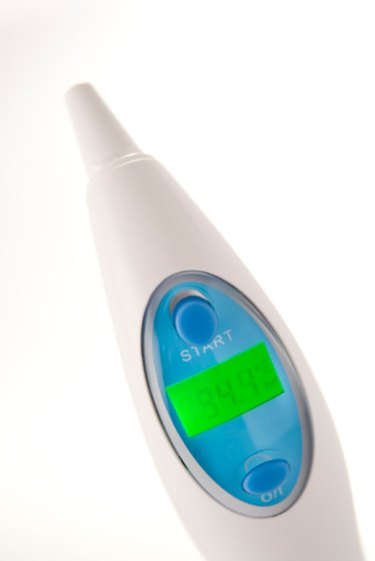
Numerous aspects of life can be measured by weight, length and distance. Some methods of measuring are intangible, but most are tangible and standardized. Measuring instruments began as simple manual machines, but modern versions can be electronic and operated without constant human observation. These tools have become faster, more efficient and more accurate and have expanded the list of things that can be measured.
Weather
Video of the Day
Weather instruments can measure aspects such as temperature, wind speed and humidity. Modern thermometers measure air temperature without the use of mercury; the electronic reading is an exact one. Modern anemometers measure wind speed digitally. They also have the ability to measure wind direction, which originally was performed with wind vanes. Weather satellites are modern measuring instruments that aren't available to the general public because of their sophistication and power. They orbit Earth and obtain overall climate readings as well as those for specific areas.
Video of the Day
Weight
Weight is the measurement of the gravitational pull on an object. The first weight measurement tools typically were beam scales. Modern weight measuring instruments vary by use. Basic scales measure the weight of an individual. They can be digital or manual. Weighing hooks serve the same purpose, but they weigh objects that are too large to be placed on scales. They are useful for many businesses and organizations that frequently weigh heavy inventory.
Distance
Rulers were one of the first methods of measuring distance. Modern instruments used to measure distance can be digital or manual. Industries that pertain to construction or architecture may use laser distance meters. They measure distance without physical contact with the object. An odometer is another modern measuring instrument that measures the distance traveled by a vehicle.
Radiation
Devices measure radiation amounts to reduce the risk of prolonged exposure to harmful radiation. Instruments that measure radiation aren't typically found in stores. They are usually developed for government organizations and industries that handle objects that give off radiation. Beta radiation detectors measure the amount of beta radiation in the air. Some substances used in the medical field can emit beta radiation. A dosimeter is another instrument that measures radiation. Dosimeters measure the amount of radiation exposure an individual has over a period of time, so the results aren't instant. Dosimeters can be attached to clothing or skin.